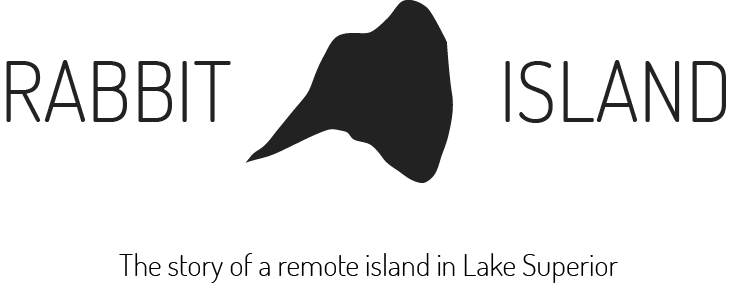Josefina Munoz // Santiago, Chile // Artist in Residence 8/8/15 - 9/2/15
The following essay was written by the artist discussing her intention to live in complete isolation on Rabbit Island for several weeks during the summer of 2015. She completed this as part of a larger multi-year conceptual undertaking titled Is_Land. More about this project can be found on the her website, josefinamunoz.net.
After returning to the Keweenaw mainland, Josefina worked as a Visiting Artist at Finlandia University, in Hancock, MI, where she set up a studio and shared her creative process with students and faculty while she prepped for the annual residency exhibition.
Prior to arriving on Rabbit Island Josefina spent 10 months living in Kenya completing field research for a project and exhibition about the Turkana nomads of northwest Kenya.
+
Everything refers in fact to the differentiation which makes possible the isolation and interplay of distinct spaces. From the distinction that separates a subject from its exteriority to the distinctions that localize objects, from the home (constituted on the basis of the wall) to the journey (constituted on the basis of a geographical “elsewhere”), from the functioning of the urban network to that of the rural landscape, there is no spatiality that is not organized by the determination of frontiers. - Michael de Certeau, The Practice of Everyday Life, 1984
BORDERLESS LAND
As we migrated through the Lokwanamoru Mountains, I could understand that we were transiting through a context of rare, yet impeccable state of total isolation. Only the materiality of a few elements could reveal that we were in the 21st century: a plastic jerrycan to carry water, tier-rubber sandals, or the industrially loomed kitenge garment (1). Everything else was carefully handcrafted from wood and leather, as so were the traditions and cultural system. The scene could only be framed in a different time period; ages back.
Living with the Turkana nomads (2) allowed me to gain a new understanding of the concept of space, place, and habitability. Likewise, the remoteness of the Ilemi Triangle (3) epitomized the notion of isolation as an enduring imprint within my creative vocabulary. Somehow, while rambling through this dry and hot Sub-Saharan region I felt like an islander, in the reign of a borderless land, merely signified by twig bomas (4), utterly absent of any permanent demarcation.
INSULAR ISOLATION
The possibility of studying real insular isolation grew as an idea until it took the form of a multistep research, residency, and exhibition initiative. I have called this project Is_Land. Adhering to the premise that an island can be a geographical territory surrounded by water, but also a metaphor of sociocultural global issues, the Is_Land project focuses on a comparative analysis between the remotest inhabited island in the world, Tristan da Cunha, and other islands with unique features.
The fundamental question is to define whether a detached landmass can act as a mirror of our larger society, or if an island is an exception to the general rules that currently structure our world.
Rabbit Island, an uninhabited, pristine speck of protected land in the middle of a lake in North America, will be the first step in the process. While at Rabbit Island I will be exposed to complete solitude for around a month. The idea is to be alone. No reading, no music, no talking, no art making, no nothing. The goal is to use time exclusively to embrace the sense of solitude and to explore the island as a concept: as a space, as a place, as a metaphor.
Is_Land is an enticement to rethink the way we inhabit land and how we conceive of space – in the multifaceted sense of the concept, as defined by writers Carol Becker and Yi-Fu Tuan as a set of relations which not only refer to a material condition, but also to a complex sociocultural schema.
FRONTIERS
As I prepare to head to Rabbit Island, I can’t avoid thinking about the way spatiality is organized by frontiers (de Certeau), and how one should approach a borderline. Now, even if the assertion given by divortium aquarum seems respectable (5), I want to fully comprehend the essence of the immediate water boundary that delineates the land. The tide, the wave, and the current, all permeable topographical elements that demarcate space, are not equivalent to those imposed by humans—the wall, the fence, the line. Yet, how can we entirely apprehend these natural or human-imposed perimeters?
At the end, the examination of an island–the land, the isolation, the concept, the perimeter–is nothing more (and nothing less) than a symbol for the examination of the distinction that divorces the object or subject (island or human) from its exteriority (world). Still, as stated by English poet John Donne, and sang by many through Dennis Brown’s classic reggae tune, no man is an island (…) every man is a part of the main.
+
References
1) Kitenge: Colorful and highly patterned fabric used in East Africa.
2) The Turkana people live in northwest Kenya, averaging a population of around 900 thousand people. Traditional Turkana families nowadays live as nomadic pastoralists, migrating according to water-access necessities.
3) Ilemi Triangle: Disputed land between Kenya Ethiopia and South Sudan, covering over 5,000 square miles.
4) Boma: Swahili term used to describe branch enclosures constructed in the form of fences that conceal cattle or housing.
5) Divortium aquarum: Latin concept employed to describe the boundaries delineated by bodies of water.
